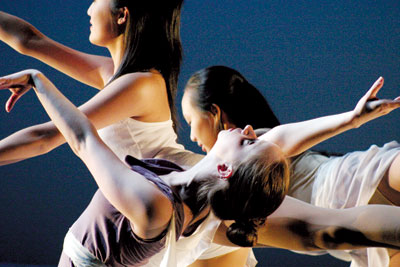All Nonfiction
- Bullying
- Books
- Academic
- Author Interviews
- Celebrity interviews
- College Articles
- College Essays
- Educator of the Year
- Heroes
- Interviews
- Memoir
- Personal Experience
- Sports
- Travel & Culture
All Opinions
- Bullying
- Current Events / Politics
- Discrimination
- Drugs / Alcohol / Smoking
- Entertainment / Celebrities
- Environment
- Love / Relationships
- Movies / Music / TV
- Pop Culture / Trends
- School / College
- Social Issues / Civics
- Spirituality / Religion
- Sports / Hobbies
All Hot Topics
- Bullying
- Community Service
- Environment
- Health
- Letters to the Editor
- Pride & Prejudice
- What Matters
- Back
Summer Guide
- Program Links
- Program Reviews
- Back
College Guide
- College Links
- College Reviews
- College Essays
- College Articles
- Back
Ellie's Brain Diary: The Dance Class
Dear Diary,
You might think of me as a mere blob of mush floating in Ellie’s skull, but I am the brain. I control essential functions in Ellie’s body including the central nervous system, working closely with the spinal cord. Without me, Ellie would not be able to enjoy Dance Company right now. She would not be able to move, breathe, or live.
As Ellie is standing in the dance studio warming up, my brain stem, part of the central nervous system, allows Ellie to stay alive in class. It controls involuntary functions like heartbeat and breathing. Without my stem, blood would not circulate through her body and air would not reach her respiratory system.
When Mr. Ferris is telling the class to roll their heads to the left and to the right, his voice acts as the stimulus, telling Ellie to do something. Sensory neurons in Ellie’s ear receive the sound of his voice and send nerve impulses to me. My temporal lobe allows Ellie to hear and process the instructions given to her by the stimulus. I interpret the nerve impulses and decide that Ellie must move her head. The back of my frontal lobe controls voluntary actions like rotating Ellie’s head in a circular motion. The left side of my frontal lobe controls movement on the right side of Ellie’s body, and the right side of my frontal lobe controls movement on the left side of her body. Motor neurons send impulses to her spinal cord, then to muscles in Ellie’s neck, enabling her to move. The somatic division or the voluntary part of Ellie’s nervous system, part of the peripheral nervous system, allows her to move her head to the left and right.
As Ellie continues her warm-up, I perform the same process explained above. I allow her to listen to her teacher’s instructions, then carry out those instructions.
Can you believe that I perform these complicated procedures every single time Ellie wants to move? I don’t think Ellie really appreciates how much I do for her!
There is a particular part of me that is especially important for dance. How do you think Ellie memorized all the combinations for the warm-up while staying balanced? My cerebellum! This part of me gives Ellie her coordination, carries out complicated movements, and maintains balance while Ellie is standing on one leg. This is the most fascinating part: every time Ellie practices something in dance, she is training the cerebellum so that the next time she practices the dance, she can perform it without thinking twice.
As Mr. Ferris starts to teach a new combination, sensory neurons in Ellie’s eyes send impulses through the optic nerves to my occipital lobe. My occipital lobe enables Ellie to see the complex dance that she is being taught. If I did not have an occipital lobe, Ellie would be blind and not able to learn the dance. The back of my frontal lobe works laboriously while Ellie tries to mimic the movements. As she does this, she trains my cerebellum to memorize the dance. Meanwhile, my cerebellum maintains her balance as she twirls across the floor.
Out of nowhere, an arm of one of Ellie’s friends slams against the right side of her face. Touch receptors on Ellie’s skin send nerve impulses through the spinal cord to me. The left and front side of my parietal lobe causes Ellie to feel the slap on her face. Another signal travels to Ellie’s spinal cord and back to her face. Ellie’s eyes snap shut. This subtle, but rapid movement, is a reflex. Reflexes are part of the autonomic division, meaning they happen involuntarily. Reflexes occur so Ellie will not get hurt. I feel excluded because the impulse was not sent to me. However, if the impulse had been sent to me, the response to the stimulus would have taken longer. The response had been quick so Ellie would not be injured. Ellie’s reaction to her friend hitting her in the face might have been to yell at her or give her an evil glare. However, my pre-frontal lobe, the master of decision-making, advised her not to yell at her friend.
Ellie finally trained her cerebellum and she now knows the complex dance combination well. Dance class is over and I maintain homeostasis by telling Ellie to drink water. I think I deserve a thank you for all the work I do for Ellie. I’ll write back soon, maybe in a few days when Ellie has to play clarinet in a concert. That will be a challenge…
Yours truly, Ellie’s Over-Worked and Unappreciated Brain

Similar Articles
JOIN THE DISCUSSION
This article has 0 comments.
